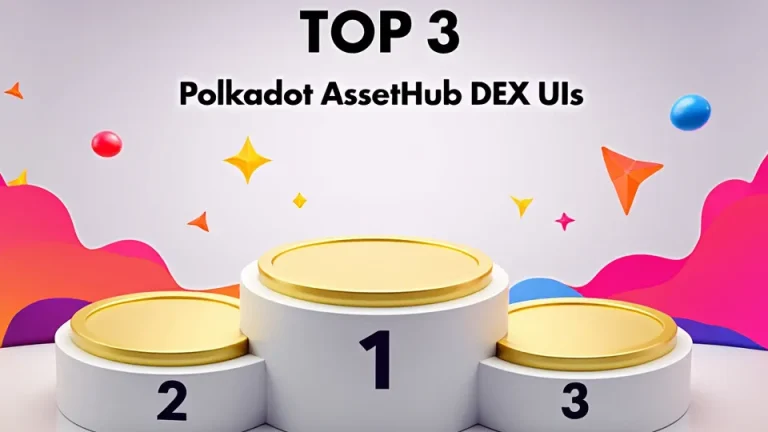Polkadot’s OpenGov system represents a revolutionary approach to decentralized governance, enabling community-driven decisions that shape the future of the ecosystem. One of the critical components of this system is the bounty program, which incentivizes contributors to work on various initiatives that benefit the broader community. However, as the ecosystem grows, so does the complexity of tracking these bounties, particularly the child bounties that are part of larger initiatives. This article delves into the current state of Polkadot OpenGov bounty tracking, highlighting the challenges and proposing solutions to improve transparency and community engagement.
Recently on the Polkadot forum Lily Mendez opened a discussion on this topic (you can follow Lily Mendez on X)

Understanding Polkadot OpenGov Bounties
What Are OpenGov Bounties?
In the Polkadot ecosystem, bounties are funding mechanisms that allow the community to propose and execute projects that contribute to the network’s growth. These bounties can cover a wide range of activities, from development and security to marketing and community engagement. The bounty process is designed to be transparent and inclusive, allowing anyone in the community to propose a bounty, which is then voted on by the community.
The Role of Child Bounties
Child bounties are a subset of larger parent bounties, created to tackle specific tasks within a broader project. For instance, a parent bounty might focus on improving the overall security of the Polkadot network, while child bounties under it could address particular vulnerabilities or create educational resources about security best practices. While child bounties are an effective way to break down complex projects into manageable tasks, tracking them has proven to be a challenge.
The Importance of Transparency in Bounty Tracking
Why Transparency Matters
Transparency in bounty tracking is crucial for several reasons:
- Community Trust: Transparency fosters trust within the community, ensuring that funds are allocated appropriately and that projects are progressing as intended.
- Engagement: When community members can easily track bounties, they are more likely to participate, either by contributing directly to the projects or by proposing new ideas.
- Accountability: Clear tracking ensures that curators and implementers are held accountable for their work, reducing the risk of mismanagement or fraud.
Current Challenges in Bounty Tracking
Despite the importance of transparency, several challenges currently hinder effective bounty tracking in the Polkadot ecosystem:
- Lack of Centralized Information: There is no single platform where users can view all active and completed bounties, particularly child bounties. Information is often scattered across different platforms, making it difficult for users to get a comprehensive overview.
- Inconsistent Data Availability: Not all bounties provide detailed information about their progress, curators, or outcomes. This lack of consistency makes it hard for users to assess the effectiveness of the bounty system.
- Limited Access to Curator Information: In many cases, the curators responsible for managing bounties are not easily accessible, and their social media or contact information is not provided. This lack of transparency can lead to questions about the accountability of those managing significant funds.
Proposed Solutions for Improving Bounty Tracking
Developing a Centralized Bounty Tracking Platform
One of the most effective ways to address the challenges of bounty tracking is by developing a centralized platform where all bounties, including child bounties, can be tracked in real time. Such a platform could include the following features:
- Comprehensive Dashboard: A single dashboard that displays all active, completed, and canceled bounties, with filters to sort by category, status, or proposer.
- Detailed Bounty Information: Each bounty entry should include comprehensive details such as the parent bounty number, title, short description, proposer, status, approved referendum, curators, and type (e.g., marketing, development).
- Curator Profiles: Profiles for curators that include their social media links, previous bounties managed, and a reputation score based on community feedback.
Enhancing Data Availability and Consistency
To improve data consistency across bounties, the following steps could be implemented:
- Standardized Bounty Templates: Introduce a standardized template for all bounty proposals, ensuring that essential information is provided in a consistent format. This template could include fields for project milestones, deliverables, and timelines.
- Regular Updates: Require curators and implementers to provide regular updates on the progress of their bounties, including any challenges faced and how they are being addressed. These updates should be publicly accessible on the centralized platform.
- Integration with Existing Tools: Leverage existing tools like Polkassembly and Subsquare to provide automatic updates on bounty statuses, reducing the manual effort required to keep the community informed.
Improving Curator Accountability
To enhance accountability among curators, the following measures could be considered:
- Transparent Selection Process: Implement a transparent selection process for curators, where community members can vote on who should manage a particular bounty based on their experience and track record.
- Performance-Based Rewards: Introduce a performance-based reward system where curators are incentivized to deliver high-quality results. Curators who consistently meet or exceed expectations could receive additional rewards, while those who fail to deliver could face penalties.
- Community Feedback Mechanism: Create a feedback mechanism where community members can rate curators and provide feedback on their performance. This feedback should be visible to the entire community, helping to build or diminish a curator’s reputation.
Case Studies: Successful Bounty Tracking Initiatives
Anti-Scam Bounty
The Polkadot Anti-Scam Bounty is a prime example of a well-structured bounty that benefits from clear tracking and community involvement. The bounty aims to fight scams and protect users within the Polkadot ecosystem. It is an open-ended bounty, with funds distributed through child bounties that address various aspects of the anti-scam response.
Key features that contribute to its success include:
- Transparent Goals: The bounty has clear, well-defined goals that are communicated to the community from the outset.
- Regular Updates: The curators provide regular updates on the progress of the bounty, ensuring that the community is kept informed.
- Community Involvement: The bounty encourages community members to get involved by proposing new child bounties or contributing to existing ones.
Community Events Reward Bounty
The Community Events Reward Bounty is another example of effective bounty tracking. This bounty was created to reward community event activities in the Polkadot and Kusama ecosystems through child bounties.
What sets this bounty apart is its focus on quick turnaround times and clear communication with the community. By providing regular updates and ensuring that all child bounties are tracked on a centralized platform, the curators have built trust and encouraged widespread participation.
The Future of Bounty Tracking in the Polkadot Ecosystem
As the Polkadot ecosystem continues to grow, the importance of effective bounty tracking will only increase. By implementing the solutions proposed in this article, the community can improve transparency, foster greater engagement, and ensure that the bounty system remains a vital tool for driving innovation and growth within the ecosystem.
Moving forward, it will be essential for the Polkadot community to remain vigilant and continue to refine the bounty tracking process. By doing so, the ecosystem can maintain its reputation as a leader in decentralized governance and continue to attract top talent and innovative projects.
Conclusion
Polkadot’s OpenGov bounty system is a powerful tool for driving community-led innovation and growth. However, to realize its full potential, the system must be transparent, accessible, and accountable. By addressing the current challenges in bounty tracking and implementing the proposed solutions, the Polkadot community can ensure that the bounty system remains effective and continues to benefit the ecosystem as a whole.
The future of Polkadot depends on the community’s ability to adapt and improve its governance processes. By enhancing bounty tracking, the ecosystem can maintain its position at the forefront of decentralized technology and continue to lead the way in building a more open, transparent, and inclusive digital world.
- Follow the discussión at the Polkadot Forum.








